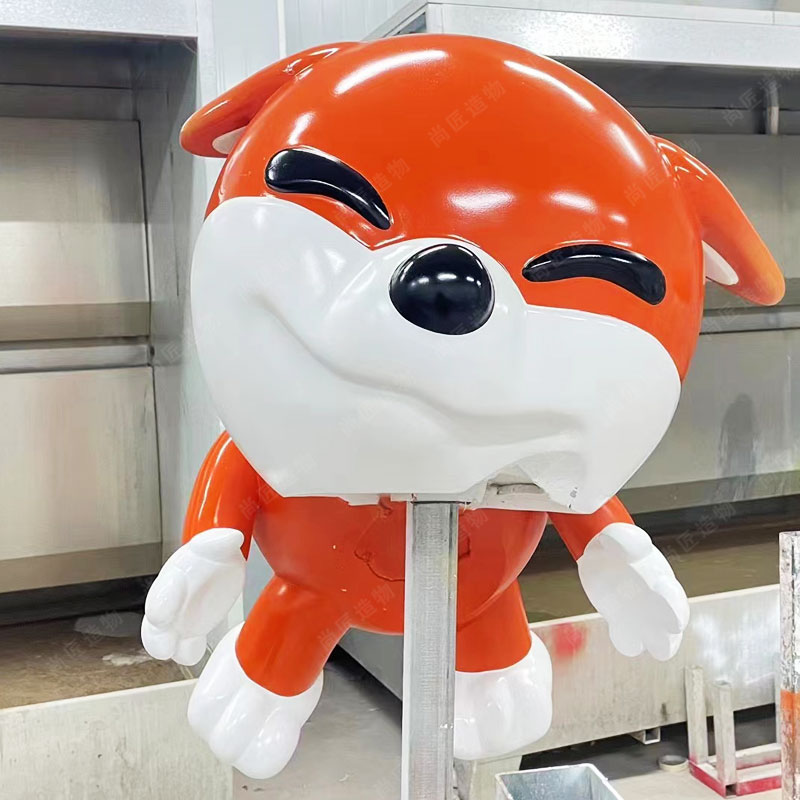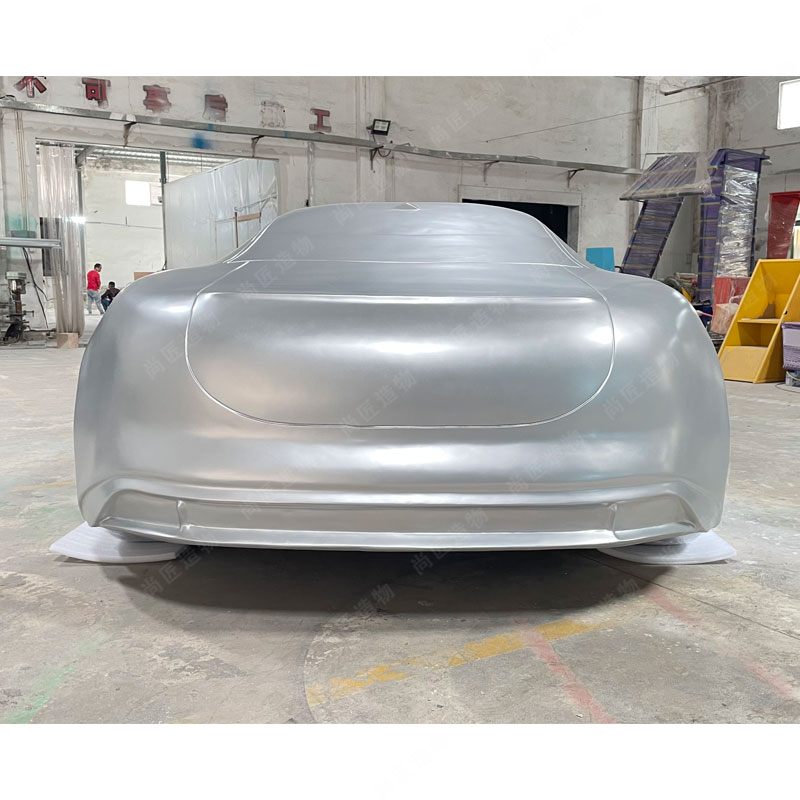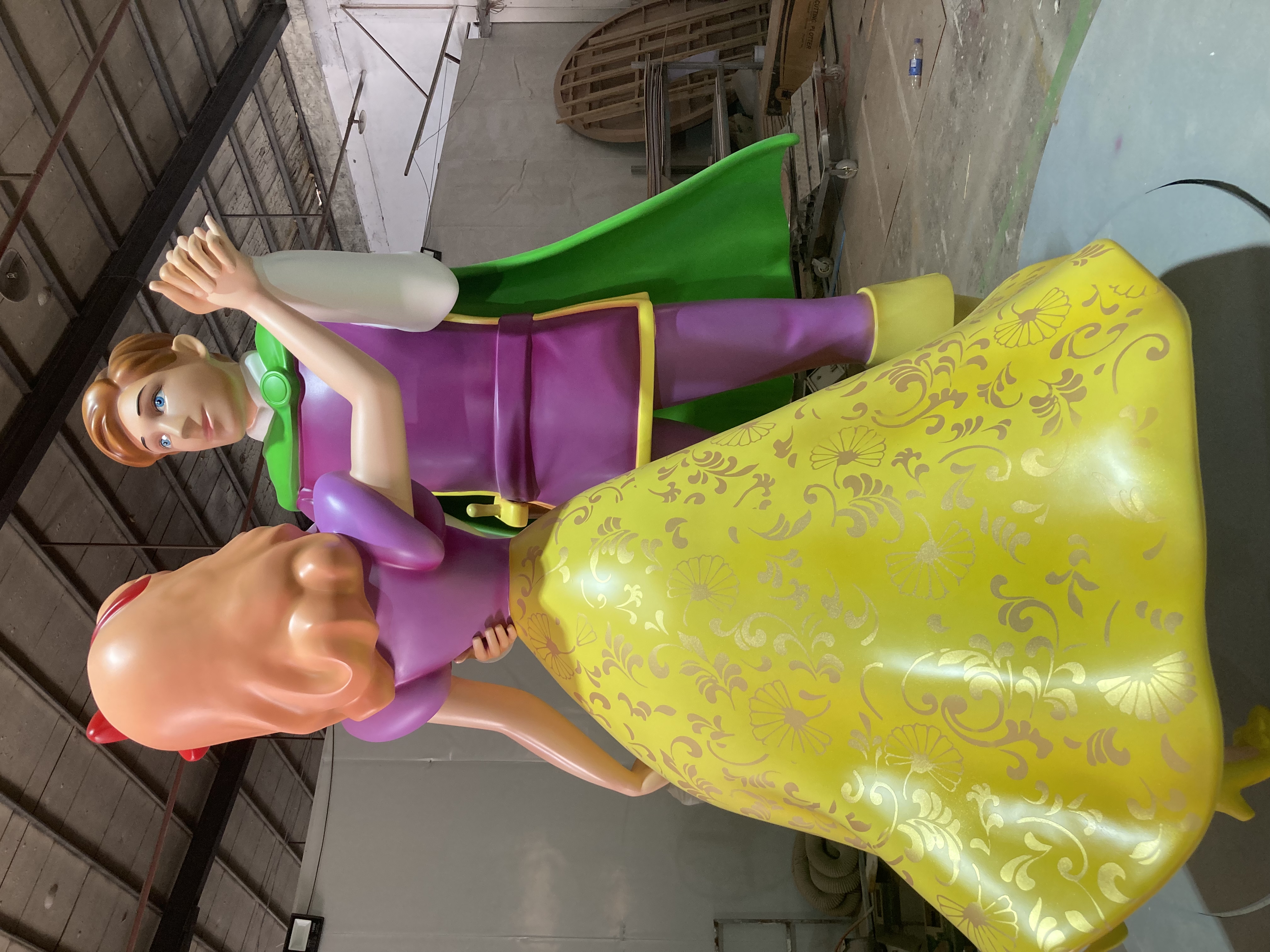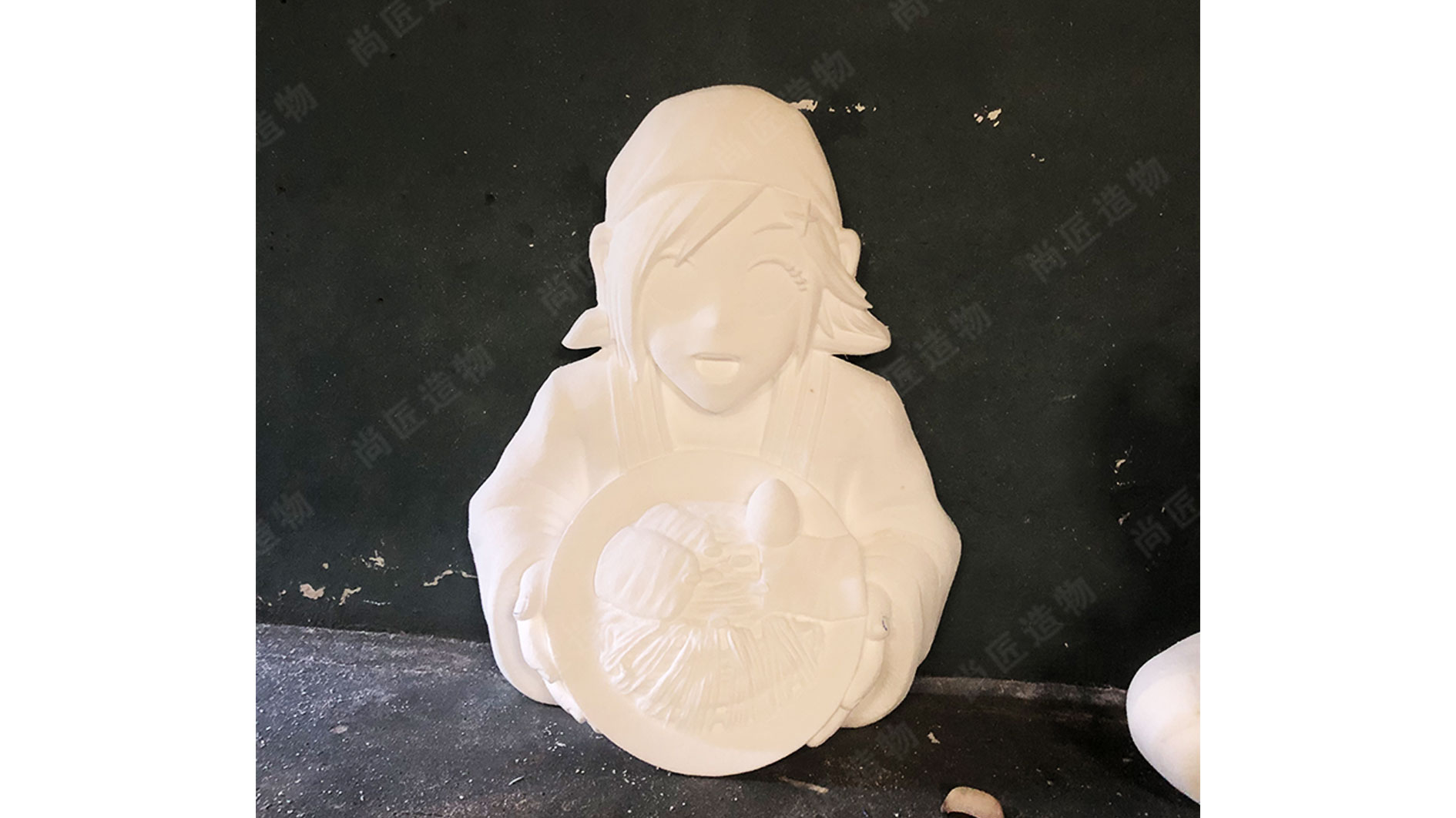Key Takeaways
Animated character statues are redefining modern tourism by merging cultural storytelling with visual spectacle. These installations act as bridges between fictional worlds and real-life destinations, offering travelers opportunities to interact with beloved stories in tangible ways. For instance, Cartoon sculpture installations often become central hubs for photo opportunities, directly fueling social media engagement and amplifying a location’s visibility.
| Impact Category | Example | Tourism Outcome |
|---|---|---|
| Cultural Immersion | Statues themed to local folklore | Deeper visitor connection |
| Economic Catalyst | Merchandise sales near installations | 20-35% revenue growth (case studies) |
| Community Revitalization | Annual anime-themed festivals | Increased year-round foot traffic |
Beyond aesthetics, such landmarks encourage travelers to explore lesser-known regions, shifting tourist flows from overcrowded hotspots to emerging destinations. Local businesses often adapt by offering themed services—from cafes to guided tours—creating symbiotic relationships between artistry and commerce. This dynamic not only sustains cultural relevance but also transforms transient visitors into repeat guests, ensuring long-term economic benefits. By anchoring fantasy in physical spaces, these statues elevate travel from passive observation to participatory storytelling.

Anime Statues Transform Tourism Landscapes
Anime statues are reshaping travel destinations by merging pop culture with geographic identity. Cities like Himeji, Japan, home to a 59-foot-tall IP character sculpture of the Mobile Suit Gundam series, have seen tourism spikes exceeding 40% since installation. These landmarks attract anime enthusiasts while introducing casual travelers to regional narratives tied to beloved characters. For instance, the Naruto theme park in Awaji Island integrates statues with local folklore, blending fictional stories with historical context.
"Statues act as cultural bridges—they spark curiosity about a place's heritage while celebrating global fandoms," notes Dr. Keiko Mori, a tourism anthropologist.
Such installations create natural photo opportunities, driving foot traffic to nearby businesses. In Kumamoto Prefecture, revenue from souvenir shops near the One Piece statue complex rose by 28% within a year. Transitioning smoothly, these sites often become springboards for deeper exploration, encouraging visitors to explore lesser-known attractions nearby. As travelers seek unique experiences, anime statues offer a balanced mix of novelty and cultural relevance—a trend increasingly adopted by cities aiming to diversify their tourism portfolios.

Cultural Immersion via Fantasy Sculptures
Animated character statues act as bridges between traditional culture and modern storytelling, offering travelers a tangible connection to local narratives. By transforming beloved fictional figures into physical landmarks, these sculptures invite visitors to engage with regional folklore or pop culture in unexpected ways. For instance, Japan’s Doraemon-themed statues in Kanagawa prefecture blend the robot cat’s whimsical charm with historical sites, encouraging tourists to explore both the character’s legacy and the area’s heritage. Similarly, South Korea’s installations of stainless steel sculpture characters like Pororo in Seoul’s parks merge sleek design with children’s media, sparking intergenerational conversations about cultural values.
This phenomenon extends beyond aesthetics. When travelers photograph or interact with these statues, they often uncover deeper layers of local identity—such as regional art styles or community-driven events tied to the characters. A Gundam statue in Yokohama, for example, becomes a gateway to understanding Japan’s robotics innovation, while Finland’s Moomin sculptures reflect Nordic storytelling traditions. By anchoring fantasy in real-world settings, these installations create shared reference points that make cultural exploration intuitive and memorable, even for those unfamiliar with the source material.
Instagram Hubs Fuel Local Economic Growth
Animated character statues have become pivotal in transforming public spaces into social media magnets, drawing travelers who seek visually striking backdrops for their content. These installations often evolve into local landmarks, channeling foot traffic to nearby businesses such as cafes, souvenir shops, and hotels. For instance, a kinetic sculpture that doubles as an interactive photo spot can increase dwell time, encouraging visitors to explore adjacent stores or dine at neighborhood eateries. Data from tourism boards in regions like Japan’s Ōarai Town—home to the Girls und Panzer statues—show a 30% rise in seasonal revenue linked to anime-themed tourism. This influx supports small businesses and often funds community projects, from street renovations to cultural festivals. While the initial appeal lies in the statues’ aesthetic charm, the sustained economic ripple effect strengthens infrastructure and creates jobs, proving that digital-age attractions can serve as tangible drivers of prosperity. By blending art with commerce, these hubs demonstrate how fantasy-inspired landmarks translate online engagement into real-world growth.
Anime Fandom Catalyzes Community Revitalization
The rise of animated character statues has proven transformative for regions seeking economic and cultural renewal. By anchoring tourism around beloved anime icons, municipalities leverage existing fan enthusiasm to attract visitors while fostering local pride. For instance, towns like Fiberglass sculpture production hubs have partnered with anime studios to create durable, weather-resistant installations that withstand high foot traffic. These landmarks often spark auxiliary growth—nearby cafes adopt character-themed menus, souvenir shops stock limited-edition merchandise, and hotels package statue tours with local heritage experiences. Over time, this synergy elevates previously overlooked areas into destination hotspots, generating jobs and revenue. Beyond economics, such projects strengthen community identity by blending pop culture with regional history. Workshops inviting fans to co-design statues or festivals celebrating both anime and traditional arts further deepen engagement. As a result, what begins as a tourist draw evolves into a sustainable model for revitalization, where global fandoms and local values coexist symbiotically.
Blending Reality with Animated Landmarks
The integration of animated character statues into real-world settings creates a unique bridge between fantasy and tangible environments. By placing iconic figures like Realistic sculpture in public spaces, destinations transform ordinary streets or parks into immersive storytelling platforms. For instance, a life-sized Gundam statue in Yokohama or Pikachu installations in Tokyo’s Nakano District not only honor anime culture but also anchor these locations as must-visit spots. This fusion allows travelers to interact with beloved characters in contexts that mirror their fictional worlds, deepening emotional connections to both the art and the locale.
Such landmarks often become focal points for guided tours, photo opportunities, and fan gatherings, subtly reinforcing regional identity. When statues reflect local folklore or pop culture history—like Kyoto’s Totoro bus stop or Osaka’s Doraemon-themed parks—they act as cultural translators, making abstract narratives accessible to international visitors. The strategic placement of these sculptures near historical sites or commercial hubs further encourages exploration, ensuring that fantasy enhances—rather than overshadows—the authenticity of the destination. This balance between imagination and reality reshapes how travelers perceive and engage with both art and place.

Tourism Surge Driven by Character Statues
Cities worldwide are witnessing measurable tourism growth linked to animated character statues, with destinations leveraging these installations to attract niche traveler demographics. Locations featuring iconic figures like Japan’s Gundam robot in Yokohama or Norway’s Trollstigen Trail’s mythical creatures report 18-34% annual increases in foot traffic, according to regional tourism boards. These sculptures act as year-round attractions, reducing seasonal tourism dependency while creating shared landmarks for both anime enthusiasts and casual travelers.
The economic ripple effect extends beyond ticket sales. Nearby businesses—from themed cafes to souvenir shops—experience revenue boosts as visitors linger to explore surrounding areas. For instance, Sapporo’s Pokémon statue cluster saw local hotel occupancy rates rise by 22% within six months of installation. Municipalities further amplify impact by synchronizing statue unveilings with cultural festivals, blending fantasy elements with regional traditions.
This phenomenon aligns with broader trends in experiential travel, where visitors prioritize unique photo opportunities and interactive storytelling. By anchoring itineraries around recognizable characters, destinations transform fleeting stops into memorable engagements, fostering repeat visits and sustained economic momentum.

Fantasy Sculptures Enhance Travel Engagement
Fantasy sculptures rooted in animated characters create dynamic interactions between travelers and destinations. Unlike traditional monuments, these statues invite tactile engagement—posing for photos, reenacting iconic scenes, or sparking spontaneous conversations among fans. This active participation transforms passive sightseeing into memorable, shareable moments. For example, visitors to Japan’s Gundam statue in Yokohama often spend hours experimenting with camera angles to capture its mechanized movements, extending their stay and deepening their connection to the locale.
Moreover, such installations bridge generational divides. Families bond over shared recognition of beloved characters, while solo travelers find common ground with fellow enthusiasts. This social dimension amplifies emotional investment in the travel experience, fostering repeat visits and word-of-mouth recommendations. Local businesses further capitalize on this engagement by offering themed merchandise or guided tours, creating a symbiotic relationship between art and commerce. By anchoring abstract fandom in physical spaces, fantasy sculptures turn fleeting tourist stops into immersive storytelling hubs, aligning with broader trends in experiential travel.
Anime Icons as Cultural Tourism Magnets
Animated character statues have evolved into powerful symbols that anchor cultural tourism in destinations worldwide. These sculptures often represent globally recognized franchises, serving as physical bridges between fictional worlds and real-world locations. For instance, Japan’s Gundam statue in Yokohama or Doraemon-themed installations in Kawasaki attract millions annually, blending pop culture with regional identity. Such landmarks create shared touchpoints for travelers, enabling them to interact with a destination’s creative legacy while fostering cross-cultural connections.
Economically, these icons act as year-round magnets, stabilizing tourism flows beyond seasonal peaks. Local businesses—from cafes selling themed merchandise to guided tour operators—leverage this foot traffic, embedding anime culture into broader hospitality ecosystems. Notably, cities like Himeji have reported increased international visits after installing statues tied to popular series, illustrating how fantasy narratives can amplify a location’s appeal. By transforming abstract fandom into tangible experiences, these sculptures not only celebrate artistic heritage but also position communities as dynamic intersections of tradition and modernity.
Conclusion
Animated character statues represent more than whimsical photo opportunities—they function as dynamic bridges between storytelling and tangible cultural experiences. By merging fantasy elements with real-world locations, these sculptures invite travelers to engage with destinations through shared narratives, whether rooted in regional folklore or global pop culture. The economic ripple effects are measurable: strategically placed statues often become focal points for local businesses, driving foot traffic to cafes, shops, and heritage sites nearby. Simultaneously, they foster community pride by celebrating artistic traditions or beloved fictional universes, encouraging residents and visitors alike to participate in placemaking. While skeptics may question prioritizing playful installations, data from tourism boards in cities like Ōarai, Japan, and Vigeland, Norway, reveals consistent spikes in visitor numbers following statue installations. As destinations increasingly compete for attention in the digital age, integrating animated landmarks offers a scalable strategy to balance nostalgia, novelty, and economic sustainability—proving that imagination, when cast in bronze or fiberglass, can become a cornerstone of modern travel.

FAQs
How do animated character statues enhance travel experiences?
These statues create memorable photo opportunities while bridging pop culture with local heritage. By placing fantasy figures in real-world settings, travelers encounter unexpected moments of delight that enrich their journey.
Can these sculptures deepen cultural understanding?
Yes, when statues reference region-specific anime or folklore, they spark curiosity about local traditions. Tourists often research backstories, leading to deeper engagement with the community’s history and artistic legacy.
Do anime statues genuinely boost local economies?
Data from Japanese prefectures shows 12-18% tourism spikes near popular statues. Visitors spend on accommodations, souvenirs, and guided tours, creating jobs and supporting nearby businesses.
Why are these statues particularly effective on social media?
Their vivid colors and nostalgic appeal make them shareable content. A single viral post can attract thousands of travelers, effectively turning physical landmarks into digital marketing tools.
How do communities maintain authenticity with fantasy-themed art?
Many cities collaborate with original anime creators to ensure designs align with local narratives. This partnership preserves cultural integrity while celebrating fictional universes.
Are there examples of statues revitalizing overlooked destinations?
The One Piece statues in Kumamoto revived post-earthquake tourism, drawing 350,000 annual visitors. Similarly, Naruto installations in Iwate increased hotel occupancy by 22% within two years.
 ch
ch English
English






